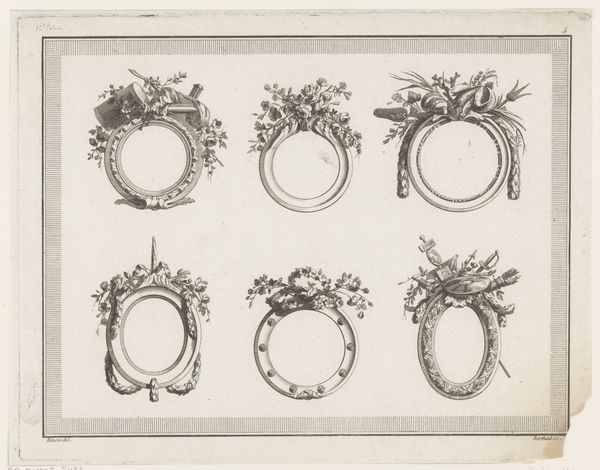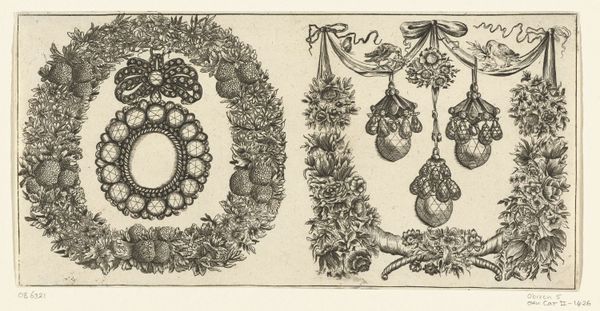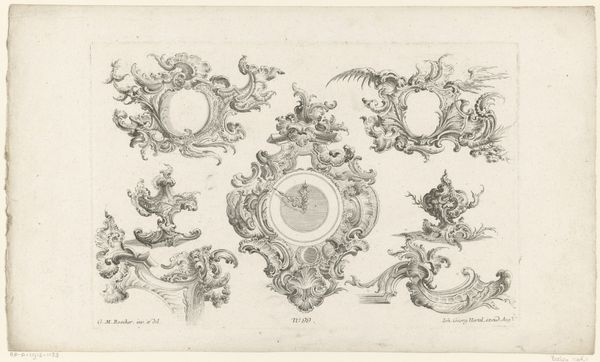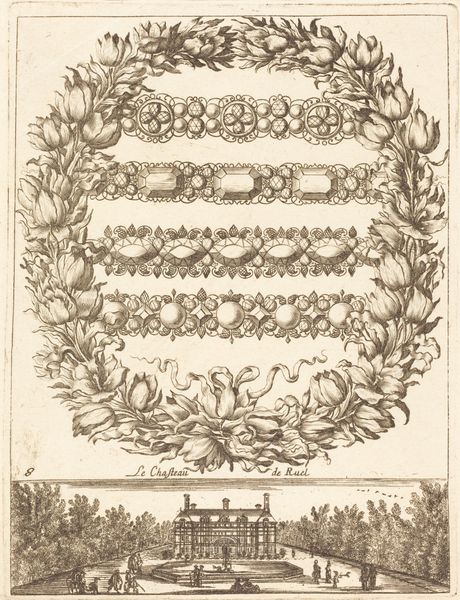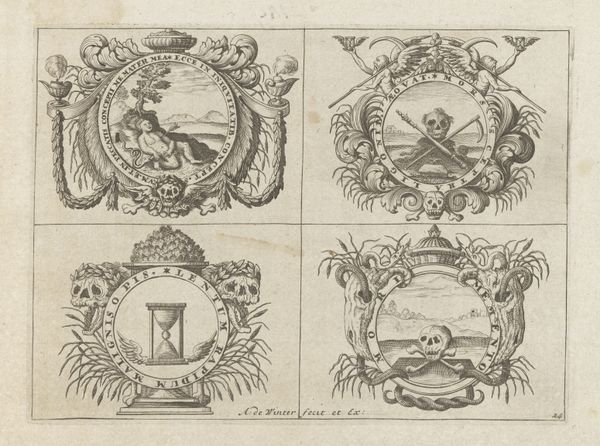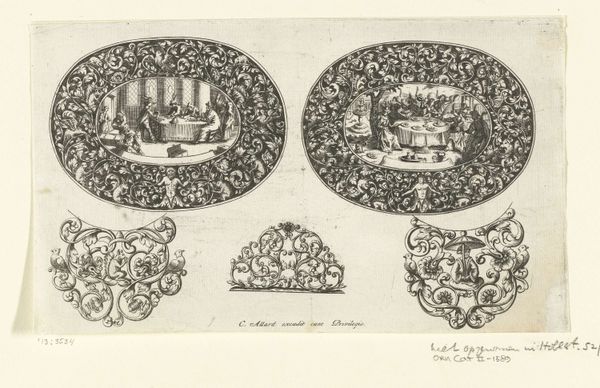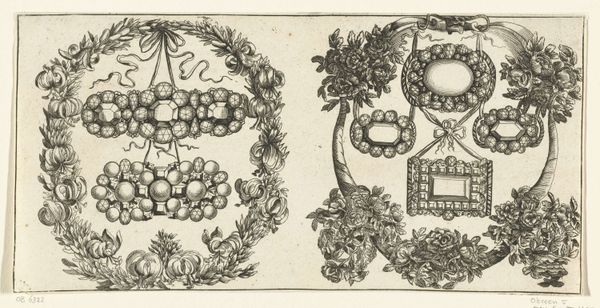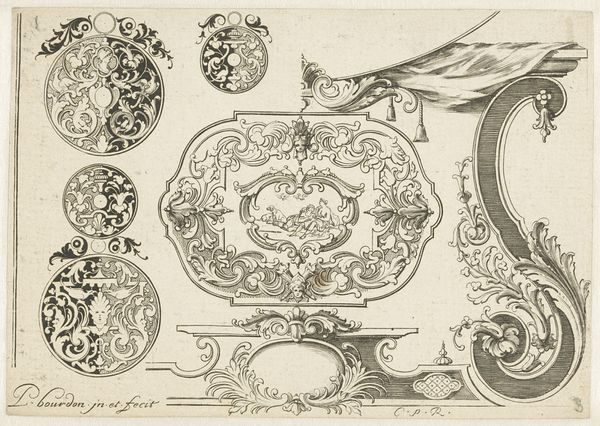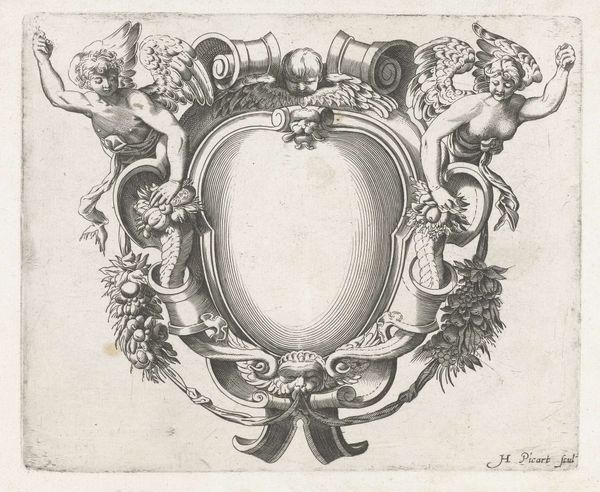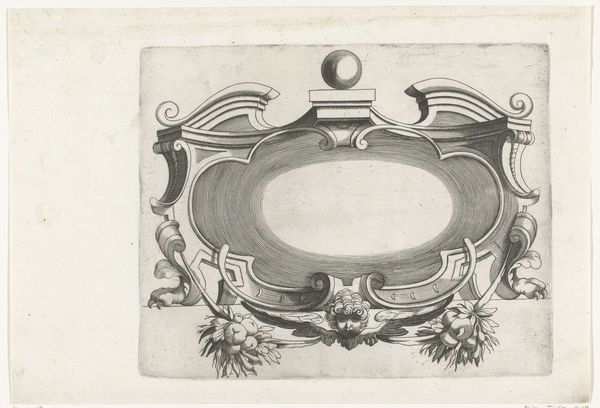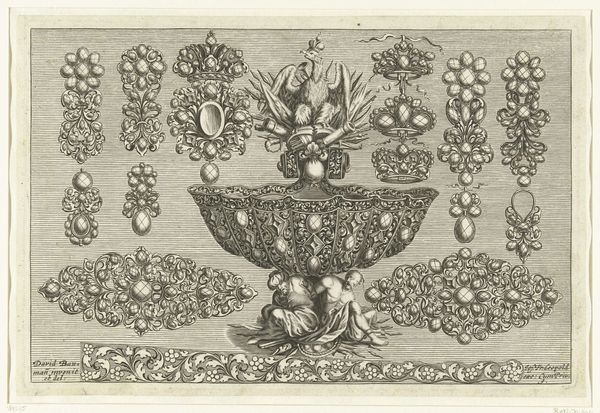
drawing, print, ink, engraving
#
drawing
# print
#
pen sketch
#
ink
#
engraving
Dimensions: height 54 mm, width 92 mm
Copyright: Rijks Museum: Open Domain
Simon Fokke made this print, "Three Laurel Wreaths and Three Crowns," in the Netherlands sometime in the 18th century. At this time, the Dutch Republic was a major center for trade and a powerful force in European politics, but it was also a society with deep class divisions and a complex relationship to its own history. The wreaths and crowns in this print are symbols of power and status. The laurel wreath, in particular, had long been associated with victory and achievement, dating back to ancient Greece and Rome. These symbols would have been instantly recognizable to Fokke's contemporaries, and they would have carried a great deal of cultural weight. We can imagine a variety of contexts in which these visual signifiers might appear, as symbols in a coat of arms, perhaps, or on a printed announcement of a civic celebration. Studying prints like this helps us understand the visual language of the 18th century and how it was used to communicate ideas about power, status, and identity. By consulting emblem books, heraldic manuals, and other historical sources, we can decode the meanings embedded in these images and gain a deeper understanding of the social and cultural context in which they were created.
Comments
No comments
Be the first to comment and join the conversation on the ultimate creative platform.
